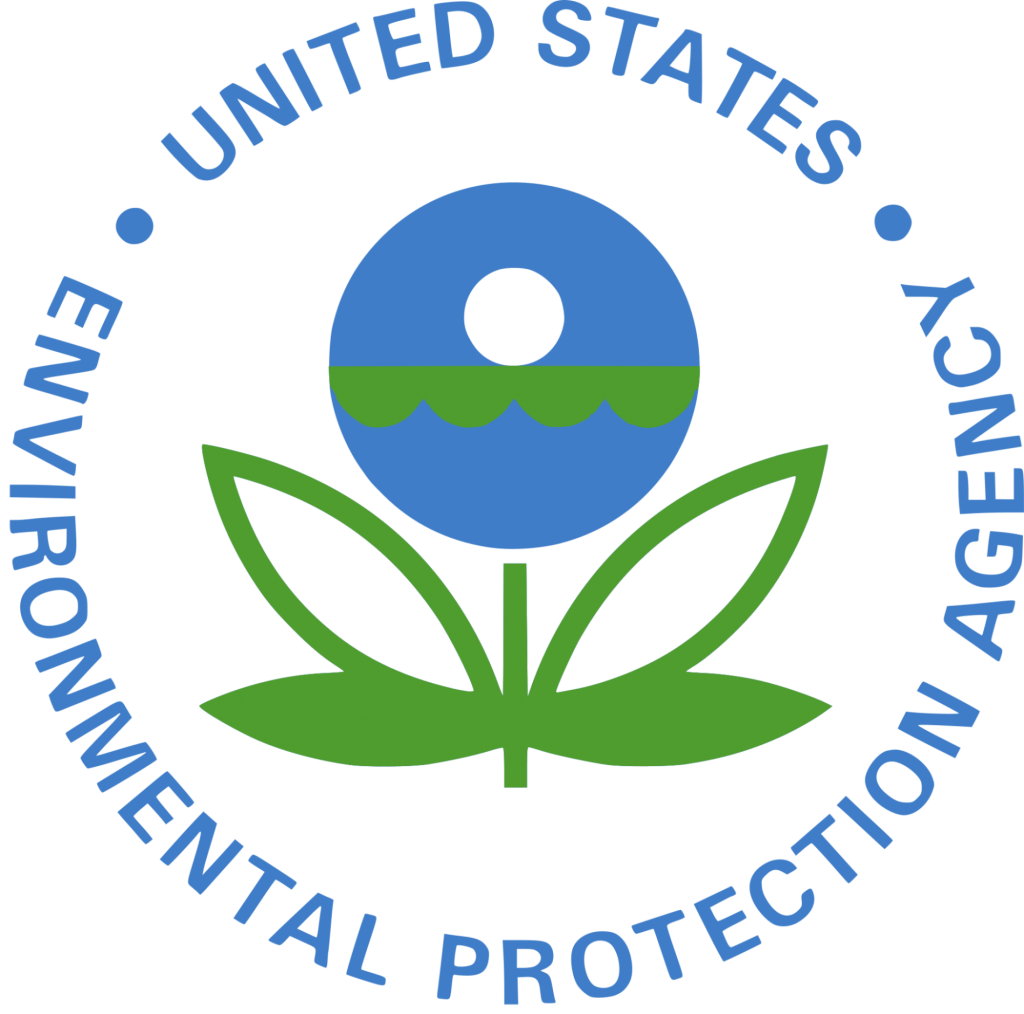As our society continues to grow and increase in population, more and more people use the earth’s resources. The use of these resources affects the land, water, air, and even human life. Taking advantage of these resources can lead to negative effects on one’s health or on the condition of our environment. Because of this, restrictions are created to sustain the earth and its resources. While concern for the environment has been decades in the making, it was not until 1970 that the environment received its most powerful ally in the creation of the United States Environmental Protection Agency (EPA).
The events that led up to the establishment of the EPA were influenced by the involvement and actions of a series of Presidents. President Theodore Roosevelt was one of the first presidents to recognize the importance of focusing on environmental issues. The four main issues he focused on were: reforestation, topsoil erosion, conservation of resources, and water pollution. President Kennedy was another president to address environmental issues. One of his best decisions was in appointing Stewert L. Udall as Secretary of Interior. Udall worked with Congress to bring investments to National Parks and other recreational areas. This was to promote awareness to the public on conserving the environment. President Johnson and his wife were also involved in environmentalism. Ladybird Johnson was involved in a campaign called “Beautify America,” which sought to clean up the environment. Environmental groups were formed, such as the Environmental Defense Fund and Friends of the Earth. In 1968, there was a law that prevented construction to take place around any system associated with the Grand Canyon. After that, President Johnson established the National Wild and Scenic River System. Finally, President Richard Nixon signed the National Environmental Policy Act (NEPA). These were all contributing steps that resulted in the establishment of the EPA.1

In 1970, President Nixon submitted an Executive Order to create the Environmental Protection Agency. The purpose of this agency was to inform the public with information about the environment and to set regulations in order to protect it. This included the protection of water, air, land, and human life since the environment effects our health as well.2 During the 1960’s, there was great need for environmental regulations; however, there were other agencies that had existed for that purpose. These agencies were not as organized and as consistent in regulating the environment as the EPA.3 The air in major cities in the 1960s became more contaminated as air pollution increased. In 1963, there was an increase in smog in the atmosphere in New York, which caused four hundred people to die from these atmospheric conditions.4 Another environmental incident occurred in California where an oil spill covered four hundred square miles of the Pacific coastline with slime that killed hundred of animals, including many birds.5 These were but two events of many that displayed how the environment was affected by human activity. This led to the formation of the Environmental Protection Agency. However, before the EPA was formed, there were a few agencies that already existed, such as the Environmental Quality Council, established by President Nixon in 1969. This then allowed Congress to pass the Environmental Policy Act of 1969. President Nixon then formed the EPA one year later to take more responsibility over the smaller environmental agencies.6 By 1979, twenty-seven new environmental laws and regulations were formed from the EPA, some of which included the Resource Recovery Act, and the Clean Air and Clean Water Acts.7

The Environmental Protection Agency is separated into ten regions in the United States, each of which is responsible for environmental oversight in three to five states. The purpose of this is so that each region is able to supervise individual states to make sure regulations and laws are enforced. In some cases, the EPA has been sued. Industries would sue the EPA if regulations seemed impossible to meet. Environmentalists sued the EPA as well because they felt the agency was making slow progress in environmental sustainability. The EPA enforced “Clean Up” regulations, where polluting industries would be required to clean up or reduce the pollution they caused in productions. For example, Love Canal in New York was a target for clean up regulations. A chemical company was responsible for restoring and cleaning Love Canal, since it had contaminated the canal with waste and other chemicals. New York had declared this incident as a health emergency in 1976. The intentions of these regulations was not only to keep water clean, but to protect people from contamination.8 A goal of the Environmental Protection Agency was to inform the public about the environment and how their everyday lifestyles affect the earth. The EPA in the 1990’s changed from focusing on environmental regulations and laws, to figuring out ways to prevent pollution and contamination.9
The Environmental Protection Agency helps to save our environment from the negative impacts of human activity. President Nixon’s choice in establishing the agency was a great idea because if it had not been created, the condition of our environment would have become worse. The EPA has also spread awareness to other countries that do not have environmentally-regulated industries on how we must protect our earth for later generations to come.
- D. T. Kuzmiak, “The American Environmental Movement,” The Geographical Journal vol. 157, no. 3 (Nov 1991): 269-271. ↵
- Encyclopedia of Environmental Ethics and Philosophy, 2009, s.v. “U. S. Environmental Protection Agency,” by Robert Collin. ↵
- Encyclopedia of Environmental Ethics and Philosophy, 2009, s.v. “U. S. Environmental Protection Agency,” by Robert Collin. ↵
- Lily Rothman, “Here’s Why the Environmental Protection Agency Was Created,” Time Magazine, April 4, 2017. ↵
- Lily Rothman, “Here’s Why the Environmental Protection Agency Was Created,” Time Magazine, April 4, 2017. ↵
- Lily Rothman, “Here’s Why the Environmental Protection Agency Was Created,” Time Magazine, April 4, 2017. ↵
- Encyclopedia of Environmental Ethics and Philosophy, 2009, s.v. “U.S. Environmental Protection Agency,” by Robert Collin. ↵
- Encyclopedia of Environmental Ethics and Philosophy, 2009, s.v. “U.S. Environmental Protection Agency,” by Robert Collin. ↵
- Encyclopedia of Environmental Ethics and Philosophy, 2009, s.v. “U.S. Environmental Protection Agency,” by Robert Collin. ↵



42 comments
Wilzave Quiles Guzman
I like that this article starts with the fact that global environmental issues affect us all and shows the interconnections of global environmental issues. Sadly, most humans think more in terms of money than in taking care of the environment and forget how important it is for the next generations and for the world’s health. I am pleased to know that environmental-friendly organizations like the EPA were made to make people conscious about the damage we have caused to the Earth. It is important to know that in the same way that we have caused damage to our environment we can try to recover and restore it. I hope that each day more initiatives to protect our environment can grow and be implemented in our society so that we learn to respect our world in a better way.
Diego Terrazas
The EPA is an essential component in conserving and protecting the environment. It is a shame that funds towards this agency were cut during Trump’s presidency. i feel as if many people overlook their efforts in which are only towards the greater good of the American people. This agency should be top priority for the government, especially in the next 50 years.
Daniela Martinez
the environment is something that we should all take into consideration. reading this article made me realize that although there are government institutions whose sole purpose is to help the environment have lacked the ability to do so. however that being said, much of the problems we face today could’ve been worse if not for the efforts from individuals who have advocated for the environment. this government institution would and has the power to do great things under the right leadership and individuals with the right mindset and ideals.
Bictor Martinez
It was great that President Nixon along with other presidents was able to help establish the EPA. By letting the public know about what is going in the world they live, people were able to become more aware about their Earth. People needed to see what was going on in their world and thanks to the EPA, they were able to help people get informed and create regulations in our environment to help our future generations live in a better world.
Lyzette Flores
I am glad President Johnson and Nixon saw trouble in the world and wanted to help. Our environment/world is something we must glorify and take care as much as we can. Global warming is real and if we don’t do our part the world will start to diminish in front of our eyes. I wish all people could see it and do their part like the EPA is. There is only so much they can do but if we all join together I feel like we could accomplish more.
Richard Morales
I really enjoyed this article as it provided the reader with so much information on the EPA and what it is all about. Although in concept the EPA is a great organization I find it to be very ineffective. It has been active for about four decades and the environment has yet to reap many benefits. We still struggle with pollution of land air and water on top of many other environmental problems. There needs to be some sort of revolution involving the preservation of this planet. I believe one day with the right leaders the EPA can truly make an impact on the worlds declining health.
Natalie Juarez
This was a well-written article that described how the U.S. Environmental Protection Agency (EPA) came about, what its functions and responsibilities are. I learned about the different leaders, such as President Roosevelt, President Johnson, and Nixon, who were all concerned about the environment so much that they felt the need to raise awareness about the importance of our responsibilities as humans to protect it. I think that the EPA is an incredible agency, so thank you for informing the world about its work in creating standards to be enforced for both human and the environment’s health.
Cheyanne Redman
I find this article extremely factual regarding the EPA but I find it very strange that nothing is being done to protect our environment due to its decline in health. I feel that the government and corruption has something to do with the fact that our environment is diminishing rapidly because not enough is being done to fix it. This article does a wonderful job with shining the lights on the ones trying to help and fix wha people have done to destroy it, hopefully the EPA can change the future.
Auroara-Juhl Nikkels
I had heard of the Environmental Protection Agency and I knew its basic jobs, but your article provided a lot of information of what the EPA did and does. I was surprised to learn that it has been around for almost 40 years, some how I expected it to be around for a shorter amount of time. The EPA is such a good idea, but there are still so many problems in the US to fix that have to do with the environment, let alone in the rest of world that need to be dealt with.
Robert Rodriguez
its crazy to think about how long the EPA has been in existence and how little has been done to actually protect our environment because of the corruption that our government and its agencies face. global warming is a current issue that we still face today and it hasn’t slowed down in recent years, and it seems like its effects are getting worse and worse. although there is a lot of corruption I’m glad that theirs still people that are or have been affiliated with the EPA that truly do care for our environment. This was an amazing article! good job!